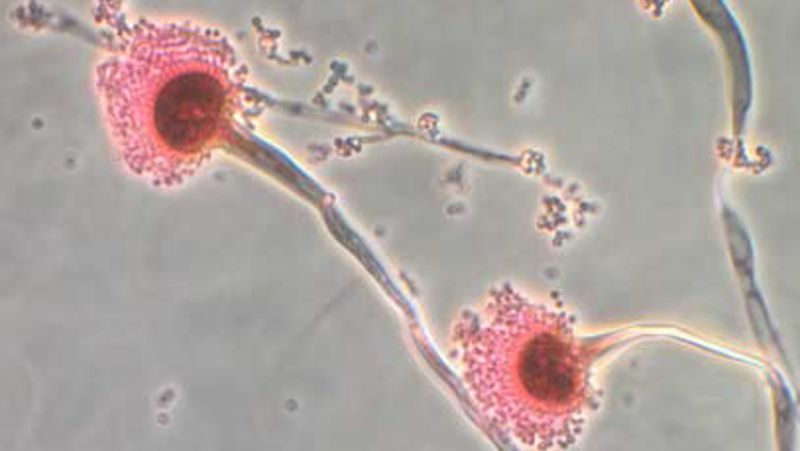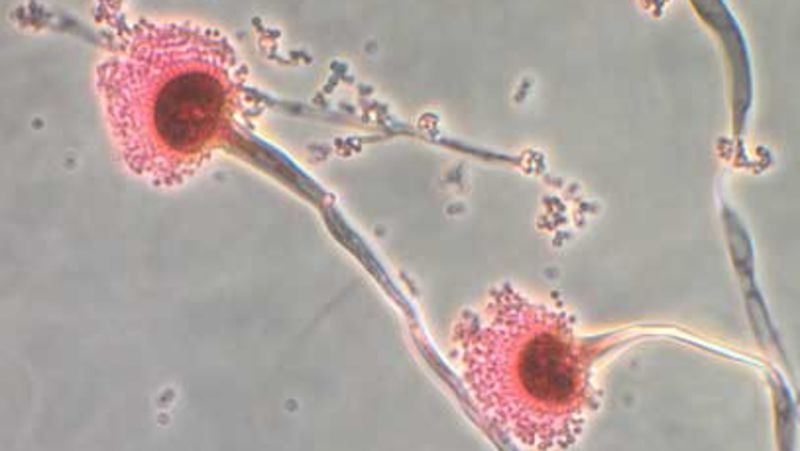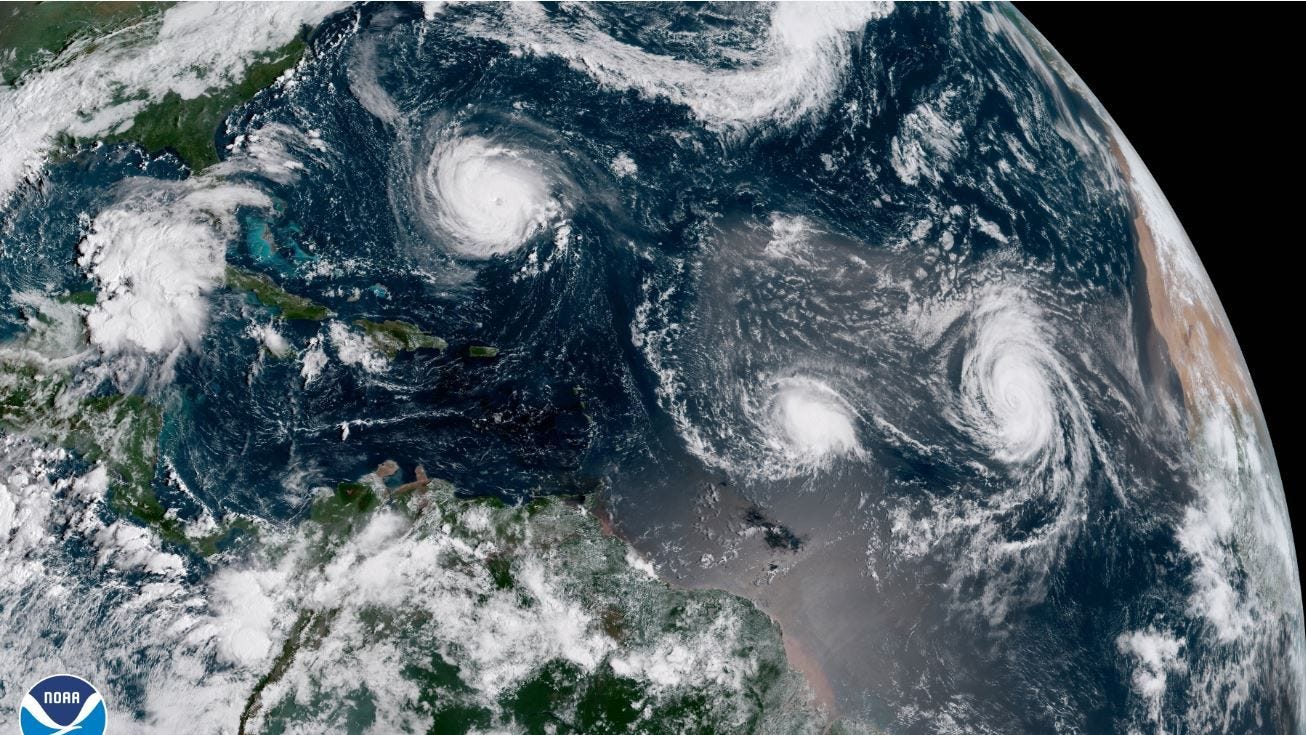Can A Flesh-Eating Fungus Become A Global Pandemic?

Welcome to your ultimate source for breaking news, trending updates, and in-depth stories from around the world. Whether it's politics, technology, entertainment, sports, or lifestyle, we bring you real-time updates that keep you informed and ahead of the curve.
Our team works tirelessly to ensure you never miss a moment. From the latest developments in global events to the most talked-about topics on social media, our news platform is designed to deliver accurate and timely information, all in one place.
Stay in the know and join thousands of readers who trust us for reliable, up-to-date content. Explore our expertly curated articles and dive deeper into the stories that matter to you. Visit Best Website now and be part of the conversation. Don't miss out on the headlines that shape our world!
Table of Contents
Can a Flesh-Eating Fungus Become a Global Pandemic? A Growing Concern
The chilling image of a flesh-eating fungus spreading across the globe conjures scenes from a horror film. But the reality, while less dramatic, is still deeply concerning. While a full-blown global pandemic from a fungal infection isn't currently considered imminent, the rise of drug-resistant fungal pathogens and increasing human vulnerability presents a significant and growing threat to public health.
The Rise of Opportunistic Fungi
Fungi, unlike viruses or bacteria, are eukaryotic organisms, meaning they share a more complex cellular structure with humans. This similarity makes them more challenging to target with medication without harming the host. Many fungi are opportunistic pathogens, meaning they typically only infect individuals with weakened immune systems. However, factors such as climate change, antibiotic overuse, and increased global travel are creating a perfect storm for fungal infections to spread more easily and affect a wider population.
Candida auris: A Case Study in Fungal Resistance
One particularly alarming example is Candida auris. This fungus is highly resistant to multiple antifungal drugs, making treatment incredibly difficult and increasing mortality rates. C. auris has spread rapidly across the globe, highlighting the potential for a fungus to transcend geographical boundaries and pose a significant public health challenge.
Climate Change: A Catalyst for Fungal Spread
Rising global temperatures and changing weather patterns are creating more favorable conditions for fungal growth and spread. Warmer temperatures can extend the growing season for many fungal species, increasing their exposure and potential to infect humans. Changes in rainfall patterns can also lead to increased humidity, further aiding fungal proliferation.
The Challenges of Fungal Diagnosis and Treatment
Early diagnosis is crucial in managing fungal infections, yet many fungal diseases are difficult to diagnose, often mimicking other illnesses. Furthermore, the development of new antifungal drugs is lagging behind the emergence of resistant strains, creating a critical gap in our ability to effectively combat these infections.
What Makes a Fungal Pandemic Different?
Unlike viral pandemics, which can spread rapidly through airborne transmission, fungal infections often require direct contact or compromised immune systems for transmission. However, the increasing prevalence of immunocompromised individuals due to factors like HIV/AIDS, cancer treatment, and organ transplantation expands the potential pool of susceptible hosts. The potential for rapid evolution and drug resistance in fungi further complicates matters.
Mitigation Strategies: A Global Effort
Addressing the threat of fungal pandemics requires a multi-pronged approach:
- Improved Surveillance: Enhanced global surveillance systems are crucial for early detection and rapid response to emerging fungal threats.
- Development of New Antifungal Drugs: Investing in research and development of new antifungal medications is paramount to combatting drug resistance.
- Antibiotic Stewardship: Reducing the overuse of antibiotics can help prevent the development of drug-resistant fungal pathogens.
- Public Health Education: Raising public awareness about fungal infections and preventative measures is vital.
Conclusion: A Looming Threat Requires Immediate Action
While a full-blown fungal pandemic might not be tomorrow's headline, the increasing threat posed by drug-resistant fungi cannot be ignored. Proactive measures, including improved surveillance, investment in research, and public health education, are crucial to preventing a future where a flesh-eating fungus becomes a global crisis. The time for action is now.

Thank you for visiting our website, your trusted source for the latest updates and in-depth coverage on Can A Flesh-Eating Fungus Become A Global Pandemic?. We're committed to keeping you informed with timely and accurate information to meet your curiosity and needs.
If you have any questions, suggestions, or feedback, we'd love to hear from you. Your insights are valuable to us and help us improve to serve you better. Feel free to reach out through our contact page.
Don't forget to bookmark our website and check back regularly for the latest headlines and trending topics. See you next time, and thank you for being part of our growing community!
Featured Posts
-
 The Arctic Race Examining The Growing Tensions Between Global Powers
May 26, 2025
The Arctic Race Examining The Growing Tensions Between Global Powers
May 26, 2025 -
 Heat Accelerated Fungus A New Threat To Human Health
May 26, 2025
Heat Accelerated Fungus A New Threat To Human Health
May 26, 2025 -
 Using Coffee Grounds To Fertilize Plants A Guide
May 26, 2025
Using Coffee Grounds To Fertilize Plants A Guide
May 26, 2025 -
 Lufthansa British Airways Air France Slash Us Routes Amid European Travel Shift
May 26, 2025
Lufthansa British Airways Air France Slash Us Routes Amid European Travel Shift
May 26, 2025 -
 The Penske Cheating Scandal Impact On The Indy 500 And Indy Cars Future
May 26, 2025
The Penske Cheating Scandal Impact On The Indy 500 And Indy Cars Future
May 26, 2025
Latest Posts
-
 Royal Tour Vs Political Claim King Charles In Canada Trumps Bold Assertion
May 29, 2025
Royal Tour Vs Political Claim King Charles In Canada Trumps Bold Assertion
May 29, 2025 -
 Canada Welcomes King Charles As Trumps 51st State Claim Reignites Debate
May 29, 2025
Canada Welcomes King Charles As Trumps 51st State Claim Reignites Debate
May 29, 2025 -
 2025 Hurricane Season Forecast And Preparedness Tips
May 29, 2025
2025 Hurricane Season Forecast And Preparedness Tips
May 29, 2025 -
 Us Braces For Busy Hurricane Season Above Normal Conditions Forecast
May 29, 2025
Us Braces For Busy Hurricane Season Above Normal Conditions Forecast
May 29, 2025 -
 Agricultural Impact The Threat Of Screwworm Infestation
May 29, 2025
Agricultural Impact The Threat Of Screwworm Infestation
May 29, 2025
